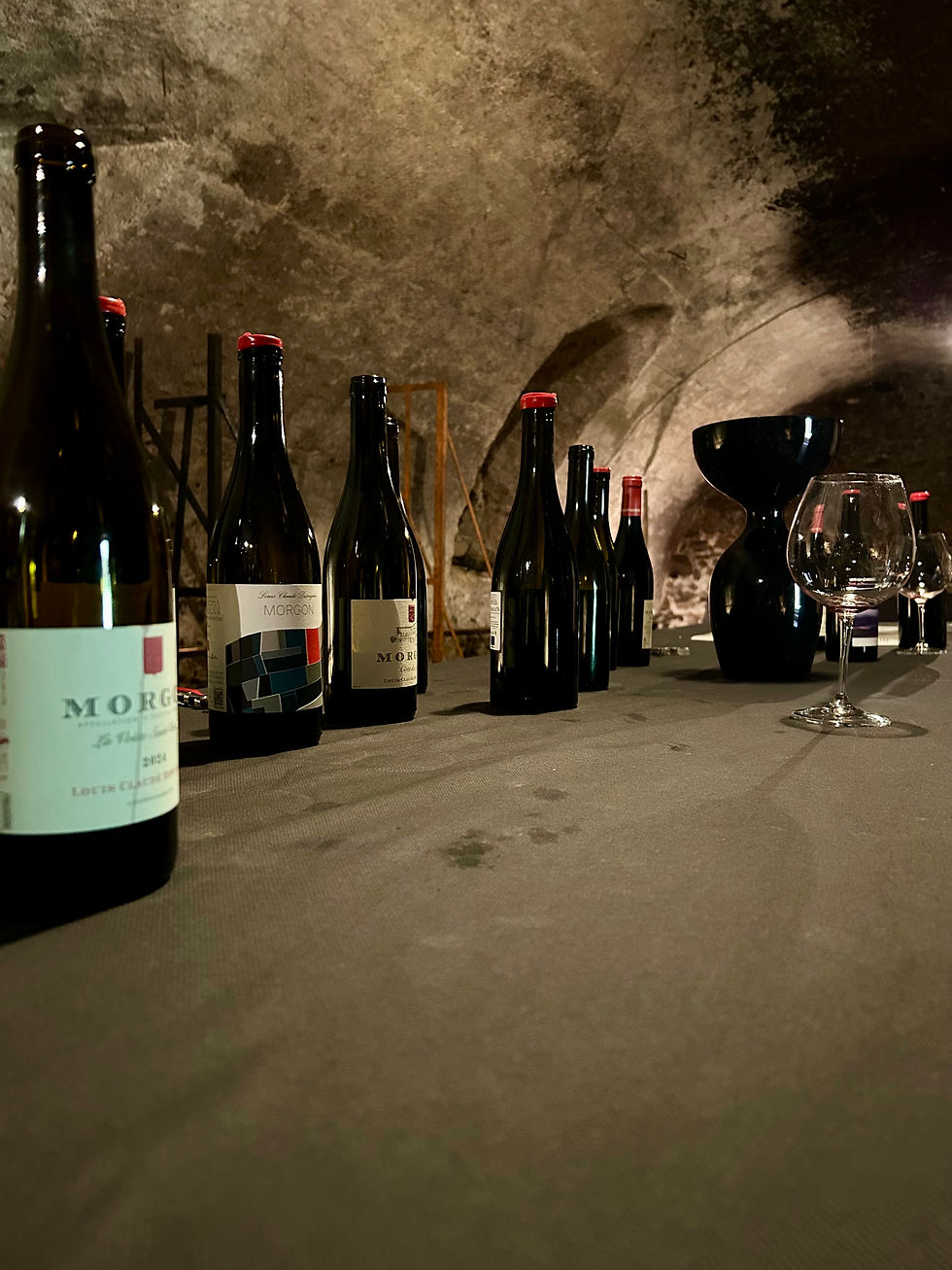The 12 Beaujolais appellations
- thomaslejeunewines
- Oct 15
- 2 min read

Included since 2018 in the great family of “UNESCO Global Geoparks”, Beaujolais never ceases to dazzle visitors with its geological richness and complexity. Located on the edge of the Massif Central, northwest of Lyon and immediately opposite the Alps, the Beaujolais landscapes have inherited a singular plant biodiversity.
The 12 Beaujolais appellations share a wide mosaic of soils (more than 300 profiles identified), sometimes with different soil types, but within each appellation, a multitude of components enrich the profiles of the wines made there.
Beaujolais covers a wide area, from northern Lyon to southern Mâcon. Its surface area represents some 13,500 hectares of vines claimed under the 12 Beaujolais appellations (AOC), or as Vin de France for wines made with grape varieties and/or methods outside the specifications (planting density, type of pruning, etc.). The two major regional appellations (Beaujolais and Beaujolais-Villages) are mostly located in the southern part of the vineyard (from north of Lyon to south of Belleville), while the ten communal appellations (crus du Beaujolais) are located in the north (the southernmost cru being Brouilly). Here are the ten crus of Beaujolais : Brouilly, Côte de Brouilly, Chénas, Fleurie, Juliénas, Morgon, Moulin-à-Vent, Régnié, Saint-Amour.
Beaujolais wines, particularly reds from the Gamay grape and whites from the Chardonnay grape, flourish on a diversity of terroirs: clay and limestone in the south, sandy and granitic in the north; not forgetting the blue stones that make up the majority of Mont Brouilly and several hectares around Montmelas.
Well-known thanks to (or because of) Beaujolais Nouveau, the last few years have witnessed a growing qualitative evolution and a growing consumer interest in Beaujolais wines, which bear witness to terroirs with multiple potentials and which can be found according to the profile of the wine sought. Beyond the clichés about appellations (Fleurie = light, Côte de Brouilly = powerful), each winemaker strives to produce wines according to his or her own taste and sensibility, which sometimes leads to pleasant surprises from a gustatory point of view.
Recently, a number of dossiers have been drawn up for submission to the INAO, with a view to having certain parcels recognized as “premier cru” for the Moulin à Vent, Fleurie and Côte de Brouilly appellations. To be continued!



Comments